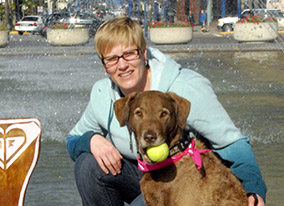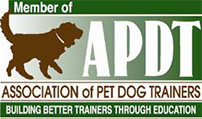There it is, that stupid lag on the fast again! Or maybe foot movement on the Stand For Exam? How about a dog that finds a nose work hide and runs to you for reinforcement instead of staying there? Any of this sound familiar? Many times our use of positive reinforcement in training can hurt us. WHAT! I want to use positive reinforcement in training, I want more behavior, and that is the way to get it, right? Reward, reward, reward and reward some more. Then my dog will be a happy worker, and then he’ll love to work because he will have been rewarded so much.
I really struggled with the correct use of positive reinforcement as a trainer. I remember feeling lost when I was trying to get my dog trial ready, when to reinforce? How much? After each exercise? Two exercises? Randomly? Jackpots? No jackpots, a lean schedule of reinforcement? There were so many ideas to sort through! Then I ended up at a Operant Conditioning Workshop given by Bob Bailey and Parvene Farhoody, and lesson number one was: Don’t Reinforce What You Don’t Want. Sure, okay, yeah, of course, duh, everyone knows that, right? Then we went to the training room to train some chickens to practice all our new training knowledge on. Bird on the table, cup of feed/clicker in my hand, target ready to target train my bird and I clicked up a storm. I clicked if the bird took a step, I clicked if it turned right, I clicked if it turned left, heck, I am the queen of reinforcement! I hear a voice on my left say “Pick up your chickens!”, and there is Bob looking at me. “What are you clicking?” he asks me, why everything of course! I want my chicken to stay around, not jump off the table, or leave me, so I reward everything, I need an engaged chicken! Then I learned lesson number two: I Have All The Reinforcement. I have the clicker, the food and the target. Bob said to put the bird on the table, and see if it was a good chicken and if it was, to let it have its target to peck and then click. I HAD THE REINFORCEMENT! Realizing the power in that one little lesson from the workshop (there were many, many more), let me know that I didn’t have to feel desperate when I trained my dog, I had to work on controlling where I put my reinforcement.
Here is the motto for every good trainer that wants to use primarily positive reinforcement in their training: Your reinforcement is communication to your dog. Every time you reinforce, you tell your dog, please do that again! Please, please, please do THAT again. Think about that, let’s look at the above training examples:
The dog is lagging on the fast pace. If this is a consistent problem, many times it can have it roots in a trainer that realizes their dog is going to lag, so at the first sign of a lag, they will get out reinforcement and try to get the dog to get up in heel position. Communication to the dog: You like that I start to hang back in heeling, you always get the cookies out for me then.
The dog is moving its feet on the SFE. This problem can start very innocently, the handler simply missed that the dog moved its feet on the SFE, and went in and rewarded. Then the dog begins to move its feet more, the handler may start to notice that this is a pattern, and so now wants to stop it, and withholds reward when the dog moves its feet, and the dog now moves its feet a lot more (extinction, good ol’extinction). The handler is now worried, so they go in and reward less foot movement. Communication to the dog: You like when I move my feet, when I move them a little you run in and reward me. Sometimes it’s a treat, sometimes you just come back to heel and reward, but either way, I know you love my foot movement.
Nose Work dog that finds the hide and comes off the hide to the handler. Here is where we need to understand when the process of reinforcement actually begins. It begins at the first sign that reinforcement is available. So, if that first sign is that you are reaching for your bait bag when your dog is at source, then you have started to reinforce the dog, and if you then take your dog back to source with the food, you have the above come off odor to you problem. Communication to the dog: I come to you when you touch your bait bag after finding odor and you take me back to odor, you love when I do that.
Do you see how our reinforcement is such a powerful communication tool we can use? Use it carefully! Use it wisely! Think where you want to put that reinforcement to communicate best what you would like your animal to do.One of the most stressful things that can happen in training is that you have to change what you previously told your animal you wanted. Re-training, or remedial training, is fixing a problem you have because you were not clear, when you first taught your dog a behavior, exactly what you wanted. I hate to have to do this, the dog has an idea, or sometimes many ideas, of what wins reinforcement and now we have to tell it that the rules have changed, we need this new thing. Maybe its steps on the drop on recall, maybe it’s picking up a wrong article before picking up the right one or maybe it’s that lag we trained in, but it’s something we rewarded, and want to change. If it’s a long standing issue, say the lag, I think of it as having to re-learn the multiplication tables with new answers! All your life you were taught that 2×2=4, but now, 2×2=6 and you are going to have to re-learn that. Not easy and stressful to be sure. Being careful where I put my reinforcement, to give the very best information to my animal, is important. Clarity and certainty are comforting and build confidence. Not knowing why or why NOT you are being rewarded for something is stressful. This leads us to a discussion……..criteria, my next blog. Until then, Happy Training!




this blog spoke to me. Your words made clear to me what I am doing when I reinforce my dog. when I reach for the food and when I give it and why. thanks for posting.